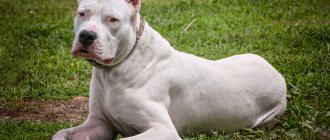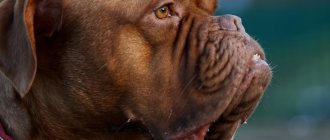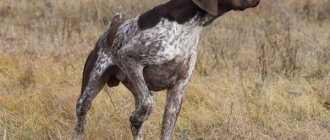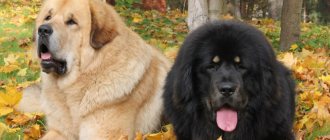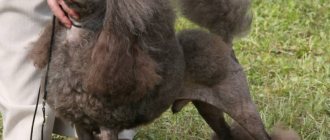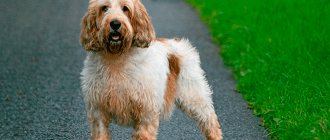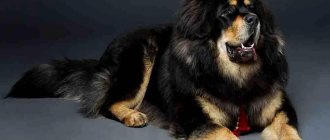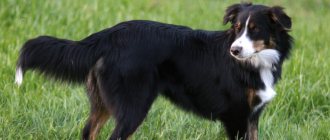The Beagle is a breed of dog designed for hunting. It was developed during the early Middle Ages, when the aristocracy was just beginning to emerge. The need for such dogs is due to the fact that in those years there was little entertainment, and hunting was very popular. During the hunt, beagles accompanied the nobility and participated in the process itself.
And who are they for people in our time? This and much more will be discussed in this article.
Description of the breed - history
The Beagle was the favorite dog of wealthy merchants and aristocrats who hunted game. However, its origins go back much further than the 18th and 19th centuries. Back in Ancient Greece, there were the first mentions of a “small breed” for hunting. A little later, inspired by the Greeks, the ancient Romans began breeding the breed. Gradually, the ancestors of modern beagles migrated from them to Great Britain.
By crossing with native dogs, it was possible to develop new breeds that inherited hunting characteristics. This is how we got:
- harriers;
- Otterhounds;
- Foxhounds, etc.
Interesting! There is a beautiful legend associated with the Beagle breed. It says that these dogs were faithful companions of the Knights of the Round Table. They accompanied brave warriors who went in search of the Holy Grail.
During the reign of Edward II, the breed was so popular that even miniature beagles were bred. Their height did not exceed 25 cm, and their weight did not exceed 8 kg. Due to their size, they received the funny nickname “Glove Beagles” - they fit in a glove. Mini representatives of the breed were easily transported in clothing pockets, in baskets on the sides of horses, which could hold up to 10 pairs.
Back in 1895, the breed was officially registered and the breed standard was approved: medium type - up to 33 cm at the withers, large type - up to 40 cm. The dog show in Birmingham became the starting point for the spread of beagles around the world.
Price range
Since the Mini Beagle does not officially exist as such a breed, we will tell you how the price for representatives of this breed as a whole is determined.
There are only 3 classes into which purebred dogs can be divided:
- pet (pet);
- brit (for breeding);
- show (for exhibitions).
The latter are the most expensive.
In the CIS countries, prices for beagles vary from 5,000 to 25,000 rubles.
Breed characteristics
The Beagle has its own distinctive characteristics of the breed. The appearance of the dog is difficult to confuse with other species. According to the established FCl standard, they have the following description:
- The head is elongated, a powerful skull with a small tubercle. The skin on the forehead does not wrinkle, without folds.
- Powerful jaw with straight white teeth. The grip is not strong. The jaw has a scissor bite.
- Beagles have long ears that reach level with the nose when extended. The shape resembles a triangle with rounded corners. They fit close to the cheeks and are soft to the touch.
- Large, shallow-set eyes, without protrusion. They have two colors: brown or nut.
- The compact body with a wide chest is supported by small paws arranged in parallel.
- The tail does not curl and has thick fur, especially the tip.
The beagle's coat is thick and short, without undercoat, and has a water-repellent effect. The color can be in three colors: black, red, white. Representatives with a two-color color are rarely found, and even more rarely are pure white or black beagles.
Tricolor
The colors are combined and interspersed in the most bizarre way, but the tip of the ponytail will always have a white color. The spots come in different sizes, and the dominant shade will add an increasingly unique combination to the beagle.
If there is more white, the animal will look very harmonious and innocent, while mixtures with black will add mischief to the appearance. By the way, black will also not always be exactly in its intensity - sometimes the color can be paler, closer to gray, sometimes just charcoal, and sometimes even with a blue tint, which is also called “raven wing color.” The nose is the same as in the previous case, black.
Character
One of the Beagle's character traits is his cheerfulness, good nature and curiosity. Not a single corner of the house or yard will remain unexplored by him. The animal gets real pleasure from learning everything new.
The friendliness of the breed allows it to easily get along with all family members. They are not aggressive towards other dogs, play easily with cats, and love children of any age. A beagle will always be happy to bring a ball thrown to him or play catch with his owner.
The desire to dominate is absent in the character of the animal. Therefore, he is highly trainable and quickly follows commands.
On a note! Their love and friendly attitude towards all people who come into the house makes them poor home guards.
Energetic beagles require a lot of freedom and space. In apartment conditions, they will feel constrained, unless the owner leads an active lifestyle. Walking or jogging in the early morning, going out into nature with the family, playing outside - the pet will keep you company in everything.
The breed is distinguished by its endurance. They can be active and mobile for a long time, run dozens of kilometers and rest in just a few minutes.
Accustoming to neatness
From the very first days of his life, the Biglik should have his own corner in your home.
Important! Forcing a child to take a place that he does not like is like breaking his psyche. Do not do that! If possible, let the puppy choose his own corner for the bedroom, and you move his bed there.
At the end of the vaccination quarantine, the puppy can be taken outside. However, do not think that he will immediately understand that walks are a reason to send his needs.
As soon as the baby has performed a “miracle,” immediately praise him loudly and give him something tasty.
If a Biglik, like a shorthaired pointer puppy , is given regular walks at the same time, then by 4-5 months he will completely stop misbehaving at home.
A beagle puppy, like any child, should have favorite toys.
As for bathing procedures, ear cleaning and nail trimming, everything is simple here too.
This article will tell you how to properly clean dogs' ears.
If this is done carefully, without frightening the dog or causing him pain, then the biglik will not resist.
Breed standard
After the adoption of the main characteristics of the Beagle standard in 1895, they remained virtually unchanged. In 1957, some additions were made, by which the breed is still evaluated today.
Breed standard:
- The height at the withers of an adult animal is from 33 to 40 cm (41 cm is considered defective).
- The average weight can be from 8 to 18 kg.
- Males must be larger than females.
- Color with the presence of three color shades.
A defect is considered if the dog has such deviations in appearance as:
- small or bulging eyes, too sharp muzzle;
- the presence of an acute occipital protuberance;
- non-typical tail shape or length;
- poorly developed muscles.
A dog is culled if it shows aggressiveness, timidity, or is afraid of loud noises or the sound of a gun shot.
Color
Dog breeders distinguish several variations of beagle color. Basic combinations can be:
- bicolor – the main colors are two: white and red;
- tricolor - three colors (white, black and red), which alternate with each other in a wide variety of variations and sizes, the tip of the tail is always white;
- brown tricolor - chocolate color is the result of a change in the gene responsible for black coloring. All shade variations are possible: from sandy, nutty to dark chocolate.
- gray tricolor - a combination of red, white and gray shades. Gray is often called blue because of the shimmer in bright light that makes a beagle appear blue.
There are also several other color variations of the beagle - spotted, speckled and mottled.
On a note! Pure white beagles are quite rare in color.
Nutrition
You should feed your pet in moderation; you should not trust the sad eyes of a “hungry” dog. For food, you can choose professional food or natural food.
In the second option, the share of meat products should prevail over everything else. You can try giving dairy products, but they may cause stomach upset. Vegetables and fruits will be a pleasant addition and a source of vitamins.
Subspecies
The Beagle breed includes several subspecies. Cynologists identify several varieties, which we will consider in more detail.
American Beagle
In 1870, several Beagles from Britain were sent to America. They received the humorous nickname "little hounds from the South." Attempts by local breeders to change the original appearance of the beagle led to the emergence of a new subspecies.
They were distinguished by the presence of a lighter, angular head and tall stature. They never decided to call them a breed standard, so as not to violate the established parameters.
On a note! Many years later, American beagles filled the entire territory of America, so they have more numbers than the European subspecies.
French beagle harrier
To produce the French Beagle Harrier, two breeds were crossed in the 19th century: the Beagle and the Harrier. The peculiarity and purpose of both is hunting. Therefore, the resulting subspecies turned out to be exclusively hounds.
The weight of an adult beagle harrier reaches up to 20 kg, and the height is from 38 cm to 48 cm, which is significantly more than the accepted standard.
English beagle
The English Beagle is native to Great Britain. This is a true representative of his breed, whom everyone else looks up to. They have a similar build to the French Beagle, but the eyes are dark, hazel or brown.
Interesting! The English beagle was kept at court by Elizabeth II, who took them with her to hunt forest game.
European beagle
The subspecies differs from its relatives in its relatively small height and weight. European beagles are not used as hounds, although their hunting skills have not been lost. These are companion dogs, active, cheerful family members.
Estonian beagle
The Estonian Hound is often confused with the Beagle. Both breeds are similar to each other, they are difficult to distinguish from each other in puppyhood, but they belong to different breeds. Unscrupulous breeders sell pets, passing off one species as another.
The differences between breeds are in appearance, temperament and character.
Estonian hound and beagle - comparison, table
| Characteristics | Beagle | Estonian hound |
| Height | From 33 to 40 cm | From 42 to 52 cm |
| Weight | From 8 to 18 kg | From 12 to 25 kg |
| Limbs | Straight, located parallel to each other. | Dry, stringy and bony |
| Paws | Round, with short nails. | Oval, large nails. |
| Ears | Length of ears to tip of nose. | The length reaches only to the middle of the muzzle. |
Mini or dwarf beagle
There is no separate subspecies of the mini beagle as such. The desire to have a small pet makes people turn to breeders who offer dwarf beagles for sale. According to them, the dog will not grow more than 20-30 cm in height.
However, height below standard means that such a puppy was discarded. He will not be allowed to participate in further breeding or at exhibitions.
Remember! The beagle's dwarf growth indicates physical developmental abnormalities.
Size
The breed acquired the name “beagle” because of its small size, because it is not for nothing that the word Begle from ancient English is translated as “small”.
Standard
According to the current standard, beagles should be small in size (male: 36–41 cm and female: 33–38 cm). The head of animals is in clear proportions and regular shape. The bump on the back of the head is pronounced, but not massive. The forehead is round and voluminous, and its length from the back of the head to the transition is extremely equal to the length of the face.
In turn, the front part, as well as the forehead, has no folds. The lips emphasize the shape of the head and are not loose, thick or saggy. Teeth without noticeable defects, strong and erect. The nose is wide, preference is given to black.
Representatives of beagles with light coat color are allowed a brown nose, but the complete absence of pigment on it (pink or cream color) is regarded as a clear fault. The ears are soft, the ends are necessarily rounded, reaching the tip of the nose in length. The eyes should have a friendly and expressive look, with a color ranging from brown to hazel or amber.
Body size - considers the proportionality of the sternum in relation to height. While the dog is searching, folds of skin are clearly visible in the neck area, and when running, the nose is directed towards ground level, but the neck is in a slight bend. The paws are often round in shape, the toes are clearly bent, their pads are soft and covered with a thick layer of skin, and the claws are short. The beagle's tail should be strong and stand vertical to the ground, without bends or any defects, even, with a white tip. When at rest, it lies along the line of the back; when moving, it is in the “up” position, without bending into a ring.
Anything that differs from the current breed standard is considered to be a defect and vice.
How long do they live?
The lifespan of a beagle dog depends on external factors and living conditions. Under good conditions, the animal will delight its owner for 11-14 years.
To maximize the lifespan of a pet, the owner must monitor its health, properly care for it, carry out hygiene measures and strengthen its immune system. Proper nutrition, daily walks - all this will allow the beagle to remain cheerful for many years.
When buying a dog from breeders, ask how old his parents and grandparents are. Genetic predisposition to longevity plays an important role when choosing a puppy.
Arrangement of a place for a dog
First of all, you need to think about arranging a separate place for the dog. At first, the puppies ask to go to the bed with their owners, but they should not be allowed to do this, since it will be difficult for the matured animal to return to its place. It will simply ignore the bedding and will always climb onto the sofa or bed.
A corner in the room is perfect for creating a special place for your pet. It is best to choose a light area. This place should be protected from drafts. Also, the sunbed will need to be located away from heating devices. It is advisable to purchase a special small mattress for your dog. It should have a removable cover for convenience (it will need to be washed periodically). A small house in the form of a booth is also suitable.
Maintenance and care
The Beagle does not require increased attention from the owner in terms of care. The dog is clean by nature and takes care of its external condition. It is enough to follow simple care recommendations and follow them:
- The pet's fur needs to be combed 1-2 times a week. To do this, use a comb with teeth that rotate. Wipe the surface of the wool with a damp soft cloth after walking outside.
- Bathe your dog when dirty or no more than once every 2-3 months. The wool is covered with a protective “film” that is not advisable to wash off. For bathing, use hypoallergenic dog shampoo or mild soap.
- Wipe paws and lower body with a damp cloth after walking outside.
Important! Make sure that there are no drafts in the room after bathing, otherwise the beagle will catch a cold.
It is also important to monitor the condition of your pet's eyes, ears, claws and teeth:
- buy liquid from a pet store to wipe off eye discharge;
- Cleaning the ears from dust, plaque, and earwax should be done every week with special cotton swabs;
- Train your pet to use a nail clipper and a nail file. This will not only protect your floor and furniture from scratches, but will replace the dog’s necessary procedure of grinding its claws down on the asphalt;
- It is recommended to brush your pet’s teeth at least 1-2 times a week using a finger brush, toothbrush or bandage.
The duration of walks on the street should be more than one hour. It is natural for beagles to run several kilometers to feel good.
Is it worth having a beagle in an apartment?
The Beagle is a freedom-loving breed. Keeping her on a leash or in a cramped apartment is not at all recommended. Out of boredom, a dog begins to howl, whine after its owner, or bark loudly. This is unlikely to please your neighbors on the floor.
In a private home, a beagle can be kept in an enclosure or behind a fence. But a dog’s friendliness and playfulness often makes it a full-fledged member of the family.
Beagle clothes
Dogs raised in apartment conditions have a delicate surface on their paws. To prevent them from injuring their pads on icy asphalt sprinkled with salt in winter, it is recommended to wear boots or ankle socks for your pets.
From the cold during street walks, you can buy a special overall for dogs at the veterinary store.
What to feed
The nutrition of a puppy and an adult dog must be correct and balanced. From birth, the owner must immediately decide what to feed the beagle: dry food, canned food or natural products.
Ready-made food is more convenient for the owner, since there is no need to cook anything. This option is suitable for a busy person. Dry food must be premium with a nutritional value of at least 350 Kcal, or super-premium - 450 Kcal.
The recommended daily intake for each age is indicated by the manufacturer on the packaging. The food is diluted in a bowl for the animal with fresh milk or warm water. After 2 hours, the remaining food should be removed from the bowl and washed.
Once a week, dry food can be replaced with natural food. The menu should include products such as:
- meat, sea fish, bones, calf tails;
- any vegetables, fruits;
- offal;
- cottage cheese, eggs, cheese;
- for wool: fish oil, cod liver, vegetable oil.
On a note! This dog breed is prone to obesity, so excess food will be deposited in fat folds. With minimal activity, the pet can turn into a small fat man with short legs.
Small puppies need to be fed five times a day. An adult dog needs two meals a day.
Prohibited foods for beagles:
- dough containing yeast;
- River fish;
- raw meat and eggs;
- onions, garlic, legumes, mushrooms;
- tubular bones;
- any sweets: chocolate, sugar, candy.
The dog should have constant access to clean water in a bowl.
How many times a day to feed a beagle - table:
| Age, months | Number of times | Total feed weight, grams |
| 1-2 | 5-6 | 320 |
| 3-4 | 4 | 640 |
| 5-8 | 3 | 960 |
| 8 months and more | 2 | 2% of the dog's weight. |
Diseases
The Beagle breed differs from others in its excellent strong immunity. A sign of good health and well-being is an active, lively beagle with an excellent appetite. Any deviation from this norm should alert the owner.
What diseases can a dog develop:
- Ear disease - otitis media. The drooping condition of the ears promotes the entry and active reproduction of various bacteria and fungi.
- Eye disease – conjunctivitis, glaucoma, cataracts, “cherry eye”.
- Diabetes, chronic hepatitis, excess weight gain, heart disease.
- Diseases of the spine and intervertebral discs, deformation of the limbs.
- Dermatitis, hair loss or congenital absence of hair.
To prevent the occurrence of the disease, it is necessary to have your dog regularly examined by a veterinarian.
Health
Characteristic diseases
Beagles are in good health and do not suffer from eye diseases such as cataracts or allergies .
However, they may be susceptible to the following diseases:
- Dermatitis;
- Diabetes;
- Lymphosarcoma;
- Intervertebral disc disease;
- Epilepsy;
- Hepatitis.
Beagles on walks constantly sniff the tracks, burning with the desire to follow any of them.
Vaccinations
Vaccination schedule :
- 1st dose at 8-9 weeks
- 2nd dose at 11-12 weeks
- 3 dose at 14-16 weeks
- Revaccination at 1 year
Every year you need to be vaccinated against rabies, and every three years you need to be vaccinated against leptospirosis, parainfluenza, parvovirosis, hepatitis and plague.
Beagles are perfect hunting dogs and therefore require serious exercise and play.
Mating and birth
When the female reaches the age of 8-12 months, her first estrus occurs. However, during this period she was not yet physically mature enough to reproduce. Breeders recommend breeding a female beagle no earlier than after two years of age.
How long does beagle dogs come into heat? Answer: three weeks, twice a year. Every 6 months there is a mating period.
One to two months before the planned mating, the dog needs to do the following:
- treatment of wool against skin parasites, fleas, lice;
- prevention against helminths;
- comprehensive vaccination against infections and viruses.
10-12 days after ovulation, the female willingly agrees to mating. The bitch is brought to the male because he feels more relaxed on his territory.
How many beagle puppies does a dog bear? Answer: it takes 57-60 days for puppies to fully develop, after which birth occurs.
Training
Beagles have a temperament that is suitable for successful training and is an intelligent breed. He is obedient, active, and quickly remembers commands. You need to start training from 3 months of age. Keep classes short and simple, otherwise the puppy will quickly lose interest.
The Beagle can be stubborn and cunning. The owner must show persistence, consistency and consistency. A leash is a tool with which a dog learns obedience. Pull it back slightly if your pet is carried away by a cat or birds passing along the street.
On a note! You can subjugate a puppy to your will and reward for obedience by giving him something tasty.
Training examples:
- Put your dog on a collar and leash and run a few laps around the stadium with him. Try to keep him running next to your feet all the time.
- Give your dog the task of jumping over low barriers.
- Teach the commands “give me your paw”, “come to me”, “no” and others.
- Throw a ball or toy, encouraging your dog to bring it to you.
Never scold a beagle for poorly executed commands or disobedience. The dog must learn to trust you and not be afraid. This is how friendly relations are established between the owner and the pet.
On the hunt
Beagles have well-developed hunting qualities. They have an excellent sense of smell, endurance, and persistence (if they pick up a scent, they are not distracted by extraneous factors or a person). At the same time, they show obedience to the owner and work with him on the same team. The hunter will not have to run around looking for his assistant in the forest; the dog will not leave his feet without permission.
What does the beagle hunt?
- ducks, wood grouse, pheasants, black grouse;
- hares, wild boars, foxes;
- roe deer, deer.
This breed can be trained on any animal or bird.
Hunting
In Russia, beagles are not often involved in hunting, but they are well aware of their purpose and, under certain circumstances, are happy to “enter the game.” This breed belongs to the small hounds and is excellent at hunting small animals such as rabbits, hares, and they are not averse to running after rodents. When a beagle is on the trail, it follows the prey's heels, barking to attract a hunter or another hound to finish the job he has started.
Beagles usually begin training in the art of hunting at 9 months of age. Usually, for this purpose, they choose a forest where a large number of hares live, and September is considered the most successful period for studying. “Unraveling” the tracks, the beagle lowers its head low and tirelessly moves forward. At such moments, he truly loses touch with reality, but one thought remains in his head, or rather two: to track down and wait for help to hand over the victim.
Having picked up the trail, he is able to run far from his owner and even find himself in another area, because the beagle’s persistence when pursuing game is unbending. Because of this, an unprepared beagle owner may lose his pet.
How to choose a puppy
Buying a puppy from strangers is not recommended. To get a pet, contact a kennel that breeds and sells dogs. This is the only way you can be sure that your future family member was kept in the right conditions and underwent all veterinary and preventive procedures.
When choosing a puppy, pay attention to the following indicators:
- Age from 1.5 to two months. A puppy at this age can already eat on its own, and does not depend on the excessive care of its mother.
- A healthy puppy is active, shows curiosity, can run up to a person’s hands, and enjoys playing with its brothers and sisters.
- A puppy that hides or sits in a corner and whines is not a good choice.
- The puppy must meet the accepted standard indicators if you plan to get offspring from it in the future or want to participate in animal shows.
Find out who the puppy's father is. It is important that he is not closely related to the bitch. Observe the mother's behavior in the enclosure. Know that she passed on most of her habits and manners to her offspring.
On a note! If you want to acquire a true friend and comrade, then rely on your instinct. You will love your puppy at first sight.
The price of a puppy in a kennel varies depending on age (the younger, the more expensive), gender (females are more expensive), and the purebred of the breed. The minimum cost is 15-20 thousand rubles, the maximum is 40-60 thousand rubles.
When purchasing, the breeder must provide a package of documents:
- certificate with the date of birth of the puppy;
- pedigree indicating one or two generations;
- veterinary passport of vaccinations and physical condition;
- an act of examining the puppy for the presence or absence of standard indicators.
If the puppy’s pedigree is not important to you, then its cost may be significantly lower.
Métis
Beagle plus pug
The cross between the pug and the beagle resulted in a separate breed called the puggle. He is very reminiscent of a large, short-legged, athletically built pug, with an elongated, wrinkled muzzle and drooping ears. The crossbreed is interesting because it is difficult to predict what the puppies will look like. She contains the best characteristics of both parents.
This is an active dog that is friendly to people and children. Very playful and curious.
Attention! A dog may develop a hunting instinct, or maybe not, depending on who it inherits more from. And yet it is clear that in any case the dog will be smart, loyal and hardy
Hybrids are more likely to have a healthier dog than its parents. But it is worth considering some nuances that may make themselves felt due to the fact that the puppy will inherit some pathologies, and also monitor the pet’s nutrition.
The puggle inherited hyperactivity from the beagle, so physical activity is required in the form of walks, but not too long.
Note: Easy to train, but can be somewhat stubborn.
Jack Russell mix
The Jack Russell Terrier was crossed with the Beagle to create the Jack Bee (Jack Bee). The breed is more popular abroad, so you don’t see it often here. This is a small, brave, assertive dog. It is most often used for hunting, as it has all the necessary qualities: agility and high running speed.
Help: Jack-bee is an excellent pet, loving and devoted to its owner. But it can plague you with its hyperactivity and cheerful disposition, which can be corrected by active walks.
Attention! Some problems may arise in parenting, this is due to the stubbornness and cunning of Jack-a-B. It is also worth being aware of the dark side of the dog's character, which can be aggressive and bite if teased.
Doesn't always get along with other dogs.
Despite its miniature dimensions, it can become a good watchman.
Basset hound and beagle mix
The Beagle Basset Hound will charm you when you meet him and become a very good friend for life. The dog has a well-developed sense of smell, which it constantly uses, exploring everything. A noisy and playful individual is not suitable for living in a city apartment; it will be completely uncomfortable and cramped there.
Since the breed is a hound, the Basset Hound and Beagle mix is an excellent hunter. The dog is mischievous and loves to run, splashing out the accumulated energy during the night, and you need to take a lot of long walks with it. It will be a great friend for a child, playing and entertaining him non-stop.The mixed breed needs control; the Beagle Basset Hound is a hunter by origin, and therefore he will not miss a single opportunity to hunt squirrels and other small game. Also, your pet will have no problem making friends with other pets in the house.
With a spaniel
An active dog that will be a good helper for those who love to hunt. Restless, friendly, non-aggressive. Perfect for families with children. It is believed that nothing can lure a beagle into the water, but a spaniel loves to swim - so the mixed breed will turn out to be a good swimmer. The main difference between the breeds is that the spaniel is easier to control.
Dachshund and Beagle mix
The unpredictable, stubborn nature that both breeds possess will also manifest itself in the mixed breed. In appearance, the dog will look organic, since it will be taller than the dachshund, slightly less elongated. This pet will not participate in exhibitions, but it will be ideal as an apartment dog.
Dad is a beagle, mom is a husky
In this combination, the puppies will have beagle-like muzzles, triangular hanging ears will be husky-like, and the coat will be thick and slightly longer than that of beagles. This pet will need long walks and a lot of attention. Keeping such a mestizo in an urban environment is not the best option. They live better in their own home, but only when they have freedom of action and participate in the hobbies of their owners (hunting, fishing).
Is it possible to breed an Estonian hound with a beagle?
It is difficult to understand whether the beagle in front of you is a purebred or a mixture with an Estonian hound if the puppy is less than 3 months old. Participation in exhibitions of a cross between these breeds is impossible, therefore, if you want a purebred puppy, ask the breeders for documents and photographs of the parents, find out the pedigree.
In conclusion, it is worth noting that all the dog breeds listed above have their pros and cons. Everyone decides for himself whether this or that habit is a minus or a plus.
Pros and cons of the breed
When making a conclusion about the Beagle breed, you can emphasize all the advantages and highlight its disadvantages. For convenience, let's create a table.
| pros | Minuses |
| Cheerful companion | Stubbornness |
| Easy to care and maintain | Likes to eat a lot, gets fat |
| Good immunity and health | Requires constant activity and walking |
| Virtually no shedding | Not suitable for pensioners, disabled people |
| No dog smell, clean | Has a tendency to otitis media |
| Suitable for children and active people | Friendly with strangers, bad guard |
Popular shades
Tricolor : black and reddish-fawn spots located on a white background. If black predominates, then this color is called saddleback, and if white, then shiny. Black and red, interspersed, are called variegated color.
Bicolor : with this color, spots of lemon, red, red or even chestnut shades are located on a white background. Black and white bicolor is also found, but extremely rarely, since black color is not typical for this breed.
White : According to the breed standard, pure white is acceptable, but there should be no signs of marking, although marking is not considered a fault in other colors.
Black : Extremely rare and usually combined with small white markings.
In general, any color typical of hounds is considered acceptable for beagles, with the exception of chocolate, also called liver.
Similar breeds
There are several breeds in the world that are very similar in appearance to the beagle. They can be crossed with each other if you do not plan to perform at exhibitions.
What breeds are similar to beagles:
- Basset. Unlike beagles, they are difficult to train, as they are capricious and willful. They may refuse to follow the owner's command. If he is lonely, then furniture, sofas, things will be used. Barks loudly and loudly.
- Jack Russell. He treats strangers kindly, he is the life of the party, he loves children. He suffers greatly from loneliness; a nervous breakdown may occur from lack of attention.
- Basenji. Requires a lot of attention to himself and does not tolerate loneliness. Doesn't allow himself to be treated like a toy, shows character. May disobey orders.
The Beagle is an ideal breed for families with children. They will be happy to spend time with them, play, and will never bite. Caring for a dog is simple and does not require special conditions. If you follow all the recommendations and eat properly, your beagle will become a true member of the family for many years.
Application
For a long time, the English Beagle was used only as a hound for hares and rabbits. An excellent sense of smell allows him to pick up even a barely noticeable trail and follow it for hours.
But today, Beagle hunting dogs are more than hounds. First and foremost, they are companions and family favorites. They are also used:
- in the rescue and search service;
- at customs - thanks to their keen sense of smell, beagles can easily detect drugs, explosives and other illegal items;
- in dog sports - agility, frisbee, freestyle;
- Canistherapy – treatment of children with developmental delays with the help of dogs;
- psychological therapy.
Testing of drugs, cosmetics and household products is most often carried out on beagles.


